Text
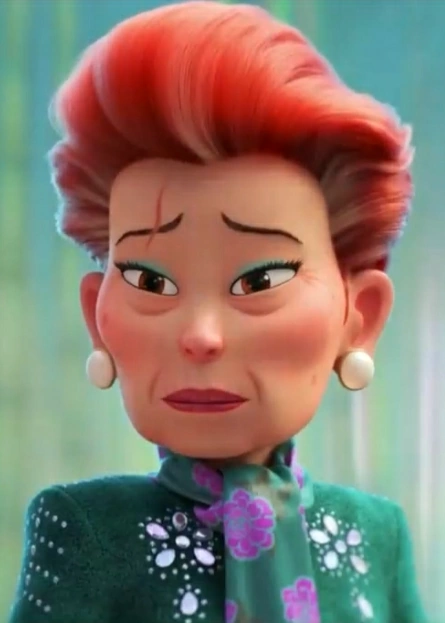
Today's disabled character of the day is Grandma Wu from Turning Red, who has a facial scar
Requested by Anon
[Image Description: 3D model of an older woman with short pulled back red hair with white strands. She is wearing dark green coat with embroidered gems and turquoise linings, a light green scarf with purple flowers, and pearl earrings set in gold. She has brown eyes and light green eye shadow. She has a light skin tone.]
#facial trauma character#Turning Red#Turning Red Grandma Wu#Grandma Wu#disabled character of the day
3 notes
·
View notes
Text
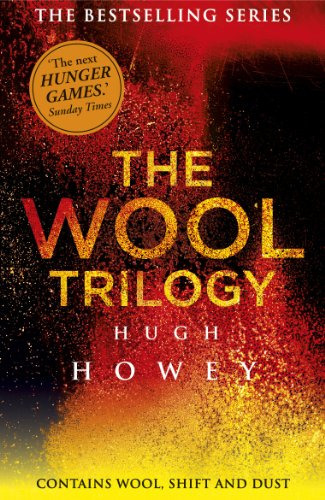
Today’s disabled character of the day is Walker from the Silo Series, who has an unspecified mental illness and/or disorder
Requested by Anon
[Image Description: Cover of the book The Wool Trilogy, it is one of the book in the silo series. The cover is back with a fiery explosion of red, yellow, and orange. The splatter vaguely makes the shape of a building.]
3 notes
·
View notes
Text

Today's disabled character of the day is Anuri from Phoenotopia Awakening, who uses a mobility aid
[Image Description: Pixel drawing of an anthropomorphic toad man. He is wearing a brown jacket, lighter brown undershirt, purple shorts, and a brown sun hat with a purple ribbon around it. He has a light yellow beard and mustache. He is holding a brown cane in his right hand. He has green skin and black eyes.]
#mobility aid character#Phoenotopia Awakening#Phoenotopia Awakening Anuri#disabled character of the day
4 notes
·
View notes
Text

Today's disabled character of the day is Ramona from Wild Winter Swan, who has an unspecified mental illness/ trauma disorder
Requested by Anon
[Image Description: Cover of the book Wild Winter Swan. It depicts a hang with a light skin tone holding up a snow globe. In the globe is a dark blue city scape with a white bird flying in the sky. The title and author's name are written in white on the top of the cover with curly font.]
2 notes
·
View notes
Text
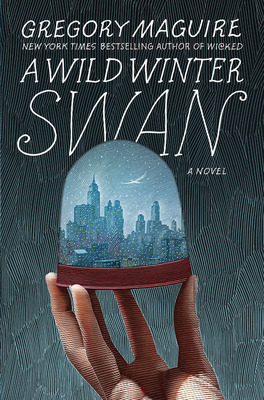
Today's disabled character of the day is Mary Bernice from Wild Winter Swan, who has hip dysplasia
Requested by Anon
[Image Description: Cover of the book Wild Winter Swan. It depicts a hang with a light skin tone holding up a snow globe. In the globe is a dark blue city scape with a white bird flying in the sky. The title and author's name are written in white on the top of the cover with curly font.]
#hip dysplasia character#Wild Winter Swan#Wild Winter Swan Mary#Mary Bernice#disabled character of the day
5 notes
·
View notes
Text
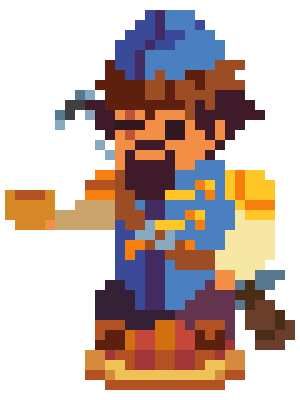
Today's disabled character of the day is Gustav from Phoenotopia Awakening, who is visually impaired. He also has facial trauma and limited mobility in his legs
[Image Description: Pixel drawing of a man sitting on a yellow and red cushion. He has dark brown short hair and beard. He has a scar running over his right lid and his left eye is black. He is wearing dark blue pants, light blue vest with gold claps, gold shoulder gaurds, white long sleeved under shirt, and blue hat with brown brim. He is holding a cup out in his right hand and has a large sword strapped to his back. He has a medium skin tone.]
#spoilers!#visually impaired character#facial trauma character#limited mobility character#trauma injury character#Phoenotopia Awakening#Phoenotopia Awakening Gustav#disabled character of the day
4 notes
·
View notes
Text
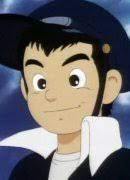
Today's disabled character of the day is Gen Nakaoka from Barefoot Gen, who has radiation poisoning
Requested by Anon
[Image Description: Drawing of a boy with short black hair and side burns, with black eyes. He is wearing a dark blue cape with a silver square on the front, blue jacket with white collar, and white undershirt. He has a light skin tone. He is smiling with a blue sky behind him.]
7 notes
·
View notes
Text

Today's disabled character of the day is Kanade Yuzuriha (Yuzu) from Anonymous Noise, who has an unspecified chronic illness
Requested by Anon
[Image Description: Drawing of boy sticking his tongue out and smiling. He has long black hair tied back into a ponytail and dark blue eyes. He has a light skin tone and a black mole under his left eye. He is wearing a brown jacket, whit undershirt with shirt with white collar, and a blue neck tie with light grey lines.]
#unspecified character#Anonymous Noise#Anonymous Noise Kanade Yuzuriha#Anonymous Noise Yuzu#Kanade Yuzuriha#disabled character of the day
2 notes
·
View notes
Text

Today's disabled character of the day is Balo from Phoenotopia Awakening, who is an amputee and uses mobility aids
[Image Description: Pixel drawing of a man using brown crutches. He is scratching the back of his head with his left arm. He is shirtless and is wearing green pants, brown belt with gold buckle, a brown shoe on his left foot, and bandages on his right wrist. He has bandages on the end of his right leg where his foot was amputated. He has short brown hair and a brown beard. Lastly he has a medium skin tone, black eyes, and is muscular.]
#amputee character#mobility aid character#Phoenotopia Awakening#Phoenotopia Awakening Balo#disabled character of the day
6 notes
·
View notes
Text

Today's disabled character of the day is Teresa Azen from Chicago Med, who is a stroke survivor with lock in syndrome and brain trauma
Requested by Anon
[Image Description: Photo of Becca Hurd portraying Teresa. She is lying in a in a hospital bed with a endotracheal tube and her eyes barely open. She is wearing a black open sweater with a light blue undershirt. She has long blond hair, blue eyes, and a light skin tone.]
7 notes
·
View notes
Text
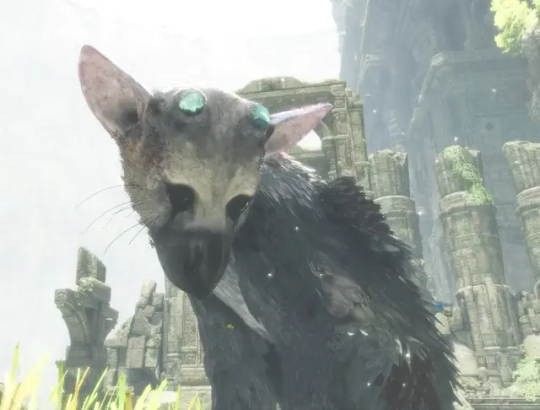
Today's disabled character of the day is Trico from The Last Guardian, who has suffered various traumatic injuries
Requested by Anon
[Image Description: 3D model of a fiction creature that is a hybridization of various animal. They have the face of a dog, the ears, body and tail of a cat, and the beak, wings, talons and feathers of a bird. They have a pair of horns on the top of their head which have been cut short and tattered wings. They have pitch black eyes with dark markings like tier stains running under their eyes.]
Please note animal descriptions are taken from the wiki
13 notes
·
View notes
Text

Today's disabled character of the day is Mauve from Phoenotopia Awakening, who uses a mobility aid
[Image Description: Pixel drawing of a woman with a brown cane she is holding with both of her hands. She has long brown hair pulled back into a bun and has her eyes closed. She is wearing a white shall, purple long sleeved blouse, and dark purple skirt. She has a medium light skin tone.]
#mobility aid character#Phoenotopia Awakening Mauve#Phoenotopia Awakening#disabled character of the day
4 notes
·
View notes
Text

Today's disabled character of the day is this unnamed doll from Miniland, who has down syndrome
Requested by @ctxrover
[Image Description: Photo of a baby doll with a medium light skin tone. They are wearing a white sleeveless top with the logo for Miniland and four arches done in silver dots. They are also wearing white shorts. They have long black hair and brown eyes.]
2 notes
·
View notes
Text

Today's disabled character of the day is Hitori Gotō (Bocchi) from Bocchi The Rock!, who has an unspecified anxiety disorder
Requested by Anon
[Image Description: Drawing of a girl with long pink hair with one strand pulled to the side. The side strand is held by a barrette in the shape of a blue and yellow cube. She has blue yes and a blue skin tone. She is wearing a pink track suit.]
#unspecified character#Bocchi The Rock!#Bocchi The Rock! Hitori#Bocchi The Rock! Bocchi#Bocchi#Hitori Gotō#disabled character of the day
17 notes
·
View notes
Text
Overused Disability Tropes
Woohoo here we go. I expect this one to be a bit more controversial because I am using specific media as examples. I would really prefer if, when critiquing this post, you avoid defending specific media, and focus instead on what’s actually being said/represented about disabled communities. If you feel I’ve done a really grave injustice, you can come into my askbox/DMs/replies to talk to me about it, but I might not answer.
One more time: I am not interested in getting into a debate about whether something is a good show/movie/book/whatever. I’m not telling you it’s bad, or that you shouldn’t enjoy it! People can like whatever they want; I am only here to critique messaging. Do not yell at me about this.
Newest caveat aside, let’s get into it!
Inspiration Porn
Without a doubt, our biggest category! Term coined in 2012 by badass activist Stella Young, but the trope has been around for literal centuries. There are a few different kinds that I will talk about.
Disabled character/person is automatically noble/good because of their disability. A very early example would be A Christmas Carol’s Tiny Tim, or, arguably, Quasimodo from The Hunchback of Notre Dame. Real life examples include the Jerry Lewis MDA telethon, or children’s hospital ads that exploit sad-eyed kids with visible illness or disability.
Having a disability does not automatically make you a kind/angelic/noble person. This many not seem harmful, and may even seem positive, but in reality, it is condescending, inaccurate, and sets bizarre standards for how disabled people should behave.
This portrayal is often intended to elicit pity from abled audiences, which is also problematic.
In these portrayals, disability is not something to be proud of or identify with, only something to be suffered through.
Disabled character person does something relatively mundane and we all need to celebrate that. This is less common in writing, but happens in the real world when people do things like post pictures of disabled people at the gym captioned “What’s your excuse?”
This is condescending, and implies that anything disabled people are capable of, abled people are automatically capable of.
Makes it seem like it’s an incredible feat for a disabled person to accomplish tasks.
Uses people’s actual lives and actual disabilities as a reminder of “how good abled life is.”
The “Supercrip” stereotype is a specific kind of inspiration porn in which disabled people are shown to be capable of amazing things, “in spite of” their disability.
The Paralympics have been criticized for this, with people saying that advertisements and understandings of the Paralympics frame the athletes as inspiring not because they are talented or accomplished, but because their talents and accomplishments are seen as “so unlikely.”
Other examples include the way we discuss famous figures like Stephen Hawking, Alan Turing, or even Beethoven. Movies like The Theory of Everything and The Imitation Game frame the subjects’ diagnoses, whether actual or posited, as limitations that they had to miraculously break through in order to accomplish what they did. Discussions of Beethoven’s deafness focus on how incredible it was that he was able to overcome it and be a musician despite what is framed as a tragic acquisition of deafness.
The pity/heroism trap is a concise way of defining inspiration porn. If the media you’re creating or consuming inspires these emotions, and only these emotions, around disability, that is a representation that is centered on the feelings and perceptions of abled people. It’s reductive, it’s ableist, and it’s massively overdone.
Disabled Villains
To be clear, disabled people can and should be villains in fiction. The problem comes when disabled people are either objects of pity/saintly heroes, or villains, and there is no complexity to those representations. When there is so little disabled rep out there (less than 3.5% of characters in current media), having a disabled villain contributes to the othering of disability, as well as the idea that disability can make someone evil. There are also a few circumstances in which particular disabilities are used to represent evil, and I’ll talk about how that’s problematic.
Mentally ill villains are colossally overdone, particularly given that mentally ill people are more likely to be the victims of violence than perpetrators of it. This is true of all mental illness, including “””scary””” things like personality disorders or disorders on the schizoaffective spectrum. Mental illness is stigmatized enough without media framing mentally ill people as inherently bad or more suspectible to evil. This prejudice is known as sanism.
Explicit fictional examples of this include the Joker, or Kevin Wendell Crumb in Split.
People can also be coded as mentally ill without it being explicitly stated, and that’s also problematic and sanist. In the Marvel movie Doctor Strange and the Multiverse of Madness, Wanda’s appearance and behavior are coded as mentally ill. This is used to make her “creepy.” Horror movies do this a lot - mental illness does not render someone creepy, and should not be used as a tool in this way.
Visible disability or difference to indicate evil is another common, incredibly offensive, and way overdone trope. This is mostly commonly done through facial difference, and the examples are endless. These portrayals equate disability or disfigurement with ugliness, and that ugliness with evil. It renders the disabled villain in question an outcast, undesirable, and uses their disability or difference to dehumanize these characters and separate them from others. This is incredibly prevalent and incredibly painful for people with visible disability or facial difference.
An example of visible disability indicating evil is Darth Vader’s prosthetics and vastly changed physical appearance that happen exactly in time with his switch to the dark side. In contrast, when Luke needs a prosthetic, it is lifelike and does not visually separate him from the rest of humanity/the light.
Dr. Who’s John Lumic is another example of the “Evil Cripple” trope.
Examples of facial difference indicating evil range from just about every James Bond movie, to Scar in the Lion King, Dr. Isabel Maru in Wonder Woman, Taskmaster in Black Widow, Captain Hook in Peter Pan, and even Doofenschmirtz-2 in Phineas and Ferb the Movie. Just because some of the portrayals are silly (looking at you, Phineas and Ferb) doesn’t make the coding of facially scarred villains any less hurtful.
A slightly different, but related phenomenon I’ll include here is the idea of the disability con. This is when a character fakes a disability for personal gain. This represents disabled people as potential fakers, and advances the idea that disabled people get special privileges that abled people can and should co-opt for their own reasons.
In The Usual Suspects, criminal mastermind Verbal Clint fakes disability to avoid suspicion and take advantage of others. In Arrested Development, a lawyer fakes blindness in order to gain the sympathy and pity of the jury.
In much more complex examples such as Sharp Objects, a mother with Munchausen by proxy fakes her daughter’s illness in order to receive attention and pity. Portrayals like this make Munchausen or MBP seem more common than it is, and introduce the idea that parents may be lying or coaching their children to lie about necessary medical treatment.
Disability as Morality
Sometimes, the disabled character themselves is a moral lesson, like Auggie in Wonder. Sheerly through existing, Auggie “teaches” his classmates about kindness, the evils of bullying, and not judging a book by its cover. This also fits well under inspiration porn. This is problematic, because the disabled character is defined in terms of how they advance the other characters’ morality and depth.
In the “Disabled for a Day” trope, an otherwise abled character experiences a temporary disability, learns a moral lesson, and is restored to full ability by the end of the episode/book/movie. Once again, disability is used as a plot device, rather than a complex experience, along with more permanent disability being rejected as impossible for heroes or main characters.
Examples include an episode of M*A*S*H where Hawkeye is temporarily blinded, an episode of Law and Order: SVU where Elliott Stabler is temporarily blinded, and an episode of Criminal Minds where Agent Hotchner experiences temporary hearing loss.
Real life examples include sensitivity trainings where participants are asked to wear a blindfold, headphones, or use a wheelchair for a given amount of time. This does not impart the lived experience of disability. It should not be used as a teaching tool.
Disabled people as inherently pure. This is related to inspiration porn and disabled people as noble, but is different in that it is usually appears in combination with developmental, cognitive, or intellectual disabilities. These characters are framed as sweet, “simple,” and a reminder to other characters to be cheerful, happy, or grateful.
Examples include Forrest Gump, Rain Man, I Am Sam, and What’s Eating Gilbert Grape.
No matter what the stereotypes of a given diagnosis are (yes, I’m thinking of the automatic cheerfulness associated with Down Syndrome), disabled people have personalities. They are capable of being sad, angry, sarcastic, irritable, annoying - any number of things beyond good/sweet/pure. It is reductive to act otherwise.
Disability as Surreal
Less common than some of the others, but still worth thinking about!
Disabled characters are framed as mystical, magical, or other than human, a condition that is either created by or indicated through their disability status. This is especially common with little people.
“Disability superpower” is when a character compensates for, or is uniquely able to have a superpower because of, their disability. Common tropes include the Blind Seer, Blind Weapon Master, Genius Cripple and Super Wheel Chair.
Examples include Pam from Supernatural, Charles Xavier from X-Men, or the grandpa in Spy Kids.
Disability as Undesirable
Last and least favorite category here. Let’s go.
Disabled people as asexual or not sexually desirable. Disabled people can be asexual, obviously. When every portrayal is asexual, that’s a big problem. It frames disabled people as sexually undesirable or implies that it is impossible for people with disabilities to have rewarding, mutually satisfying sexual relationships.
Examples include The Fault in Our Stars or Artie in Glee.
Abandoned due to disability. Hate this trope. Often equates disability with weakness. Don’t want to talk about it. It’s all right there in the title. Don’t do it.
Examples: Quasimodo in Hunchback of Notre Dame, several kittens in the Warrior Cat series, several episodes of Law and Order: SVU, Bojack Horseman, and Vikings.
Discussed in 300 and Wolf of Wall Street.
Ancient cultures and animal nature are often cited as reasoning for this trope/practice. This is not founded in fact. Many ancient civilizations, including Sparta, cared for disabled people. Many animals care for disabled young. These examples should not be used to justify modern human society.
Disabled characters are ostracized for disability. Whether they act “““normal”““ or odd, characters with visible or merely detectable disabilities are treated differently.
Examples include pretty much every piece of media I’ve said so far. This is particularly prevalent for people with visible physical disabilities or neurodivergence. Also particularly prevalent for characters with albinism.
This is not necessarily an inaccurate portrayal - disabled people face a lot of discrimination and ableism. It is, however, very, very common.
Bury your disabled. What it says on the label.
Examples: Animorphs, Harry Potter and the Deathly Hallows, American Horror Story, Criminal Minds, Dr. Who, Star Trek, The Wire.
Mercy killing is a subtrope of the above but disgusting enough that it deserves its own aside. I may make a separate post about this at some point because this post is kind of exhausting and depressing me.
Examples: Me Before You, Killing Eve, Star Trek: The Next Generation, Of Mice and Men, and Million Dollar Baby.
Disability-negating superpowers imply that disability is undesirable by solving it supernaturally instead of actually portraying it, and giving their character powers instead.
Examples include (arguably) Toph from Avatar: the Last Airbender, Captain America: The First Avenger, The Legend of Korra, Dr. Strange, and Daredevil.
Overcoming disability portrays disability as a hindrance and something that can be defeated through technology and/or willpower.
Fictional examples include WALL-E, Kill Bill, The Goonies, The Dark Knight Trilogy, Heidi, The Secret Garden, The Inheritance Cycle, Agents of S.H.I.E.L.D, The Big Bang Theory, Dr. Strangelove, Sherlock, The Witcher.
Real life examples include videos of wheelchair users standing from their chair to walk down the aisle at a wedding, or d/Deaf children “hearing” for the first time through cochlear implants.
What Does This Mean for Your Writing?
First of all, congratulations for making it this far!
Now, as I have said again and again, I’m not going to tell you what to write. I’ll ask some questions to hopefully help guide your process.
What tropes might you be playing into when writing disabled characters? Why do you find these tropes compelling, or worth writing about? How prevalent are these tropes? How harmful are they? What messages do they send to actual disabled people?
Just because they are common tropes does not mean they are universally awful. Cool fantasy or futuristic workarounds are not necessarily bad rep. Showing the ugly realities of ableism is not necessarily bad rep. It’s just a very, very common representation of disability, and it’s worth thinking about why it’s so common, and why you’re writing it.
As always, conduct your own research, know your own characters and story, and make your own decisions. If you have questions, concerns, or comments, please hit me up! Add your own information! This is not monolithic whatsoever.
Happy writing!
1K notes
·
View notes
Text
Accepted Characters 5/26/2024
Trico from The Last Guardian
Teresa Azen from Chicago Med
Kanade Yuzuriha (Yuzu) from Anonymous Noise
Gen Nakaoka from Barefoot Gen
Mary Bernice from Wild Winter Swan
Ramona from Wild Winter Swan
Walker from the Silo Series
Grandma Wu from Turning Red
Unnamed doll from Miniland
Krystal from Hard Corps: Uprising
Victor from Edelmot
Unnamed doll from Miniland
Shiho Kobayakawa from Private Actress
Alex Kilbride from NCIS Los Angeles
Neptune from the Hyperdimension Neptunia series
Hitori Gotō (Bocchi) from Bocchi The Rock!
Shanoa from the Castlevania series
Colin from Colin From Accounts
Reagan Ridley from Inside Job
Andre Lee from Inside Job
Zacharie Pelletier (Citrine Heart) from Magical Warrior Diamond Heart
Zoe from How To Speak Dolphin
Seth Miller from House
Arthur Radley (Boo) from To Kill A Mockingbird
2053 Requests Remain
7 notes
·
View notes
Note
Hi, Jake from the Water Seeker lost a toe causing him to limp, he later has his leg amputated and then suffers a stroke making him unable to talk. Thanks!
Do you have a reference that confirms this?
1 note
·
View note